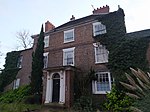Holgate Road carriage works, York

The Holgate Road carriage works was a railway carriage manufacturing factory in the Holgate area of York, England. The factory began production in 1884 as a planned expansion and replacement of the North Eastern Railway's Queen Street site; the works was substantially expanded in 1897–1900, and saw further modernisations through the 20th century. The works passed to the ownership of the London and North Eastern Railway (1923); British Railways (1948); British Rail Engineering Limited, known as BREL York (1970); and privatised and acquired by ABB in 1989 (ABB York). The works closed in 1996, due to lack of orders caused by uncertainty in the post-privatisation of British Rail period. Thrall Car Manufacturing Company used the works to manufacture freight wagons for English Welsh and Scottish Railway from 1998 to 2002, after which the factory closed again. As of 2009, the site is in maintenance related rail use by Network Rail as their Rail Fleet Engineering Centre (RFEC). The site is used by Network Rail, and various rail sub-contractors to maintain Network Rails own fleet of maintenance rail vehicles. As a consequence of manufacturing work using asbestos during the 20th century more than a hundred people associated from the works have died from illness caused by exposure to the material, with asbestos related illnesses still occurring and causing death into the 21st century.
Excerpt from the Wikipedia article Holgate Road carriage works, York (License: CC BY-SA 3.0, Authors, Images).Holgate Road carriage works, York
Wilton Rise, York Holgate
Geographical coordinates (GPS) Address Nearby Places Show on map
Geographical coordinates (GPS)
| Latitude | Longitude |
|---|---|
| N 53.9569 ° | E -1.1046 ° |
Address
Wilton Rise
Wilton Rise
YO24 4BW York, Holgate
England, United Kingdom
Open on Google Maps










